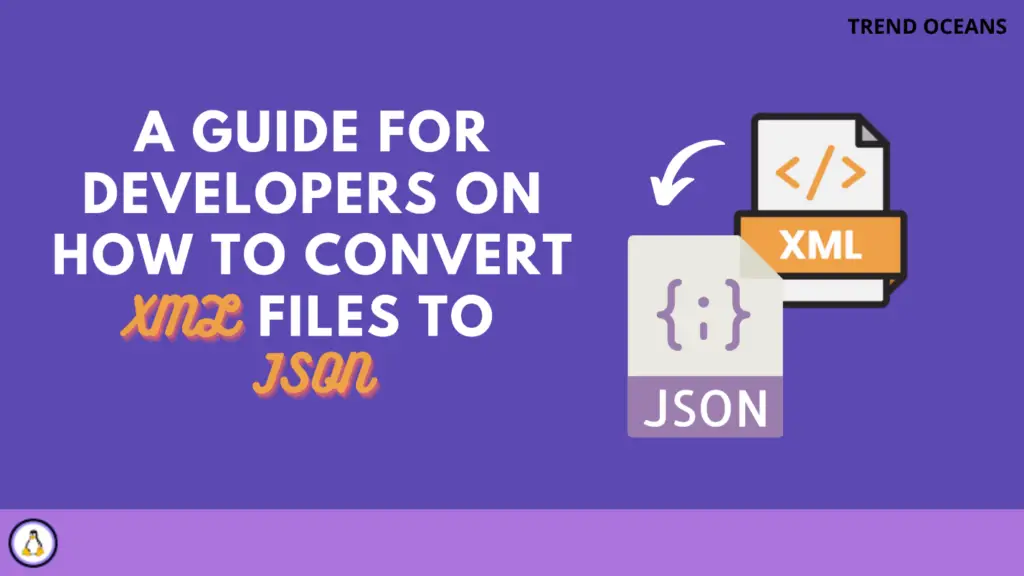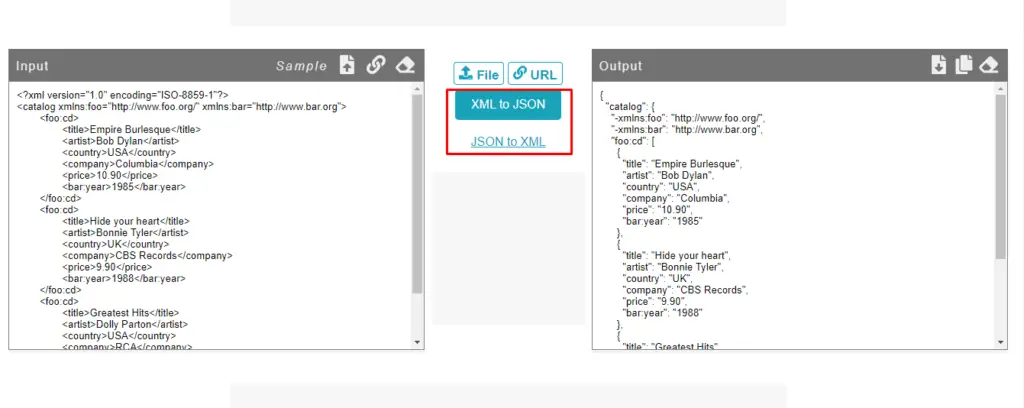Modern-day technology is bringing innovation and improvements to present responsive solutions in development. In the process, open data sharing solely relied on the XML programming language.
Over time, various programming languages have emerged like XML, JSON, and HTML. All these languages have significance, but they differ on multiple levels.

If we receive data in XML and have to transfer it to a system that understands JSON, the conversion of these languages comes in handy.
This article will guide you on converting files from XML to JSON using practical and easy steps. We will also go through the significance of these languages and how they can benefit software development. We will compare both of these languages in terms of benefits and uses.
What is XML, and how can we use it?
XML is the extensible markup language, processed in .NET, Java, and other classic programming languages. With XML, you can create interactive web pages and render the data according to users’ requirements.
XML is also very useful in making transfers and transactions more convenient and responsive in B2B and B2C infrastructures.
With XML, we can automate various functionalities online to make them more accessible. However, XML can get complicated due to its parser code, making it challenging for developers to work in this language.
What is JSON, and how can we use it?
JSON is abbreviated as JavaScript Object Notation which is relatively more updated and broadly used by systems than XML. Like XML, JSON also assists in data transportation.
But it is one step ahead when it comes to code’s length and file size.
JSON has gained recognition due to the creation of API code in web services. It’s a simple text-based language that follows a straightforward data structure that does not require extra code lines.
All these factors make JSON fast and reliable in web services.
Why do we have to convert XML files to JSON?
Developers might ask themselves if it is worth converting from XML to JSON. Down below, we have stated some reasons to understand why conversion is necessary:
- As discussed earlier, JSON file size is small compared to XML, making it quick and easy to transfer.
- The line of code in JSON is not as bulky as XML. The code is short and straightforward, making it easy to understand and implement.
- Excessive use of words in the code makes XML files heavy, and systems take their time to process such language.
- In simple words, XML software works slower as they affect the databases.
- JSON software is much faster and more responsive as compared to XML. With quicker outcomes, a website’s performance is improvised on web-based platforms.
Methods to convert XML files to JSON
Now that we have learned how beneficial JSON can be compared to XML let us talk about the conversion procedure from XML to JSON. You can follow the following methods to perform this conversion which are mentioned down below:
1. Manual coding
Manually converting code from one language to another requires expert skills and time. A developer should understand both formats to convert the exact XML code into JSON.
But you have to be familiar with both of these languages to create the nodes.
Manual conversion may take hours, depending on the length of your XML code. But it can help to polish your skills in both languages.
Investing time and effort in such conversion may not be worth it if you’re not an expert in programming. Therefore, you may have to start from scratch every time something goes in the wrong direction.
2. Using Python Libraries
External libraries can be used to utilize JSON and XML files. In this regard, Python libraries are commonly used to handle JSON and XML files which makes the conversion a bit complex.
Format conversion in python is not that simple as there isn’t a library for such a purpose. If you gain access to a dedicated library containing all the necessary folders, it can help perform the conversion.
Once you gain access to these folders, you can use external libraries or software to transfer data from XML to JSON. This method can take some time and research to find a variety of libraries and extract their proper use.
3. Using an Online Code Converter
This method is the most effective, time-saving, and accurate way to convert code from XML to JSON. An online XML to JSON converter can assist both professional and beginner-level coders in enhancing their expertise to understand the code better.

The interface is straightforward to operate as you can choose to directly paste the XML code or upload a file containing the XML code on the input side.
Click on ‘XML to JSON,’ and you will get JSON code in the output box within seconds. You can also download the converted code in a text document.
You can use this tool as a reverse converter to change JSON code into XML. It is free to use, giving you unlimited access for code conversion without spending hours on the console.
The online-based availability of this tool makes it convenient to use from any platform without downloading or installing any software.
The conversion tool can help you convert code in either XML or JSON. But it is vital to be sure about the system compatibility before performing the conversion. Therefore, we are going to present some salient features of XML and JSON for a brief comparison:
Features of XML
- XML tags are customizable as they are not predefined. A developer can modify and use them as per requirement.
- XML includes a lot of text in the code, making it pretty slow to process by some systems.
- XML code can transfer and save the data without showing it on the front-end of a website.
- Even though there is a lot of text in the XML code, it’s pretty simple to understand by coders.
Features of JSON
- JSON follows APIs which are easy to use and understand by the users.
- JSON libraries are independent and do not rely on other libraries for processing.
- The most prominent feature is that JSON works fast and has a small size, making it efficient for the systems.
- But on the downside, the JSON format is compatible with every browser.
Conclusion
The growing trend of converting from websites to web applications is growing rapidly these days. Many applications and services are switching platforms and styles to approach more efficiently in their domain.
In this case, a developer holds the prime responsibility to understand and implement various coding formats.
But learning about multiple languages requires exceptional skills and regular practice to stay in motion. This process can take a lot of time and effort.
With the help of automated tools, hours can become a matter of seconds. A developer can rely on online tools to produce different formats of the same information. These converters come in handy when compatibility with data files becomes an issue with systems.